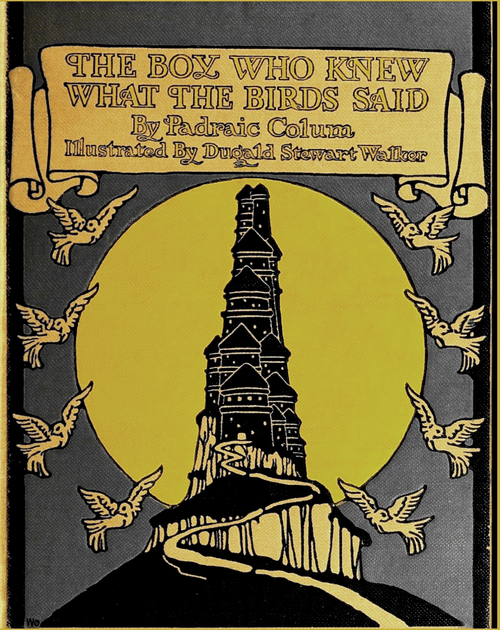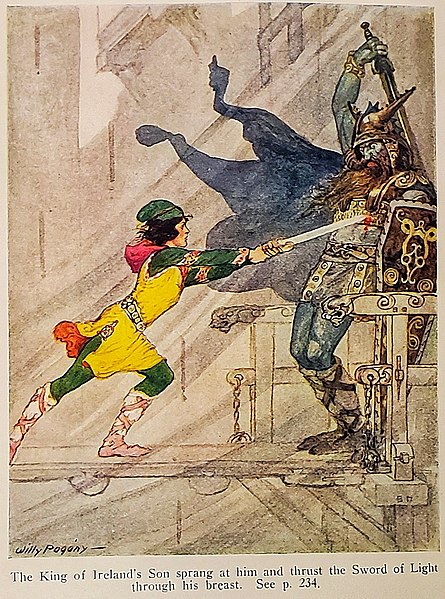Padraic Colum, writer, poet, dramatist, folklorist, children’s author and actor, died 51 years ago on January 11, 1972 aged 90. MAL ROGERS looks back at his life
COLUM was born Patrick Collumb in Longford in 1881, where his father was the workhouse master. Aged 17, the young Patrick became a clerk in the Irish Railway Clearing House in Dublin, but left in 1904 determined to make a living through writing. His first poems appeared in The United Irishman, edited by Arthur Griffith. The Saxon Shillin' (1902) won a competition for a play to discourage young Irishmen from joining the British army.
He ultimately became most famous for the lyrics of She Moved Through the Fair, in 1916.
One of the most important writers of the Irish Literary Revival, Colum helped found the Abbey Theatre. But a falling out with co-founder WB Yeats over theatre policy meant that he severed his ties with the theatre, and never collaborated with the Abbey again.
Colum was a whimsical, natural storyteller, and particularly focused on children’s fiction such as The Boy Who Knew what the Birds Said, originally published in 1925.
Colum’s innate ability to tell a yarn — but a yarn that contained some starkly beautiful prose and some — undoubtedly came from his upbringing.
His father job at the workhouse, where Padraic was born, later brought the young boy into an environment “where waifs, strays and tramps congregated … and was entertained by the gossip and history of old men and old women who were survivals from an Ireland that had disappeared,” as he later wrote. But all will have had stories to tell.

Colum spent some of his upbringing at his grandmother's farm in Co. Cavan. Evenings there would often be spent round the turf fire listening to a shenachie (or seanchaí) — a traditional storyteller, recounting legends, songs and history and scraps of poetry.
Colum moved with his wife Mary to America in 1914. His output there — stories, poems, plays — were often accompanied by the beautiful and intricate illustrations of Dugald Stewart Walker, an American artist. He was one of the most celebrated illustrators of children’s books during the early 20th century — his work is best remembered for the lavish, magical realm that they frequently described.
But it was as a writer of poetry and drama that Colum won the affection of Irish people. Aside from She Moved Through the Fair, much of his poetry was about the marginalised people of rural Ireland. In The Old Woman of the Roads, the traveller in question just wants a place to shelter. This became a standard piece of verse in Ireland. At one time just about everybody in Ireland would have known at least a snatch of it. This verse gives a flavour of the poem:
And I am praying to God on high,
And I am praying Him night and day,
For a little house - house of my own -
Out of the wind's and the rain's way.
Colum’s dramatic works included Mogu the Wanderer, a romantic fairytale, and The King of Ireland’s Son.
He was a devoted friend of James Joyce, and although had fallen out with Yeats, continued to champion his poetry. For a while Colum lectured at American universities on various aspects of English writing, with emphasis, naturally, on the Irish literary tradition.

Colum never produced a theatrical masterpiece — no one piece of drama of his has truly stood the test of time. His reputation was perhaps overshadowed because he came along at a time when Ireland’s conveyor belt of literary talent had led to the Irish renaissance — as well as Joyce and Yeats, the cast of the writing community in the country included Lady Gregory, George Moore, the poet A. E. (George W. Russell), Sean O'Casey and John Millington Synge.
These were his contemporaries, but Colum earns his place alongside them because his early work, probably more than anyone else’s, established the genre of realist folk drama.
The New York Times said of Padraic Colum in their obituary: “The mixture of the gaiety and the shadow which is so much a part of the Irish heart was his.”

